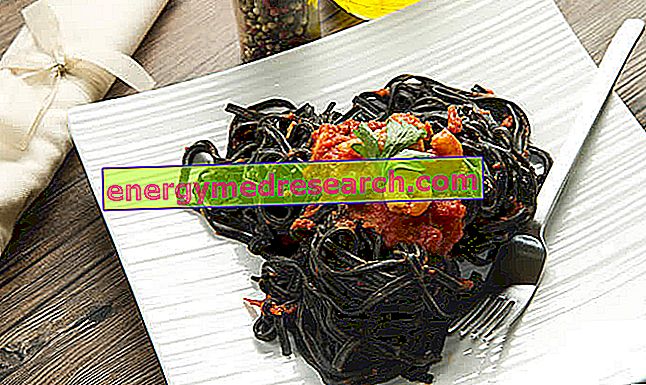Crickets to eat
Some food industries are focusing on producing insect-based foods. Among the various species, one in particular seems to lend itself considerably to farming: the ground cricket (genus Acheta ).

The company that first developed a product for cricket-based human nutrition is the " Tiny Farms ", based in California. This company, after a considerable financial investment, has put on the market a real animal meal based on insects: the cricket flour .
Cricket flour
The cricket flour does not seem to have many features in common with most of the flours of animal origin (fish meal, horn bones, hoof bones and blood, etc.), as it turns out:
- edible for man;
- hygienically safe;
- eco friendly;
- although for the moment it is extremely expensive.
From what its producers claim, cricket flour should neither be at risk of contaminants (such as dioxins and methylmercury in fish), nor at risk of prions (such as those responsible for "Bovine Spongiform Encephalopathy" or BSE or Mucca Pazza ).
The cost of cricket flour (100% ground cricket) is around 25-45 $ a pound (just under half a kilogram). Obviously, this is a decidedly higher price than either the average of the flours of animal origin, or that of the alternative flours destined to improve the protein intake for humans. It follows that, for the time being, the use of cricket flour for human or animal food is totally unsustainable (especially contextualized in a large-scale production).
For their part, the inventors of the cricket flour "focus everything" on a decidedly enviable and desirable characteristic, or eco-sustainability (instead alien to the other products of the same category). It is not a novelty that the planet Earth is running out of its natural resources due to excessive exploitation by man; despite this, we continue to produce a quantity that is, to say the least, excessive energy and food.
Suffice it to say that, to get 1 pound of meat (just under half a kilogram), an average of 25 pounds of feed is needed. In contrast, to produce 1 pound of crickets, 2 pounds of feed is sufficient. A big difference. This is due to the fact that, compared to traditional slaughter animals (birds and even more mammals), insects grow exponentially faster.
Marketing forecasts indicate that, by 2054, alternative sources will exceed 33% of global protein production and, in this context, cricket flour will play a key role.
Costs: Is it worth it?
At this point, many readers will ask, " Why does cricket flour cost so much if, to produce it, you need to use so little feed ?"
Stressing that this is a product that is still under development, it is necessary to take into account that the manufacturing companies have had to invest enormous capital for: research, state-of-the-art facilities, the formulation of feed, software, etc. Obviously, the costs will be amortized over time and further reduced thanks to research and technological commitment; however, at the moment it is necessary to continue to invest capital to optimize the breeding method and the manufacturing process.
I personally believe that, although the introduction of a similar product on the market can be difficult, especially due to the collective skepticism, an attempt by the Western population is at least a duty.
The growth rate of crickets is many times higher than that of large mammals, which is why their use in human nutrition could constitute a partial but effective solution to the problems of: intensive farming, presence of drugs and contaminants in the final product, exploitation of land resources and deforestation for agricultural purposes.
Nutritional advantages
Why eat insects?
Indeed, by reading this article, even the less picky readers will have asked themselves a similar question. The answer is far from obvious and, indeed, it is almost unbelievable.
Most insects destined for human consumption, without the exception of crickets, contain very little fat and, moreover, it uses a protein concentration with a high biological value, which reaches 60-70% of the total mass.
Furthermore, the crickets are very rich in calcium, iron and vitamin B12 (cobalamin); in conclusion, they would seem a real cure for bone growth, for the prevention of iron deficiency anemia and even of megaloblastic anemia.
Use in Human Nutrition
How is insect flour used in human nutrition?
It seems that, to date, the main use of cricket flour is as an ingredient in the formulation of protein bars.
The companies that deal with the commercialization of cricket flour are increasing visibly. In addition to Tiny Farms, Cricket Flours (Oregon), Next Millennium Farms (Ontario), Big Cricket Farms (Ohio), Aspire Food Group (Texas) and All Things Bugs (Georgia).
In addition, more than one company is currently producing cricket flour-based foods. The most important are the Chapul (based in Salt-Lake City) and the EXO (based in Brooklyn), thanks to the aforementioned protein bars.
Again, the cricket flour market has proven to be fertile. The aforementioned companies are followed by San Francisco (based in Bitty) that produces cricket flour biscuits, and Six Food (based in Cambridge) which produces Chirps, or legume-based snacks, rice and cricket flour, similar to chips.



